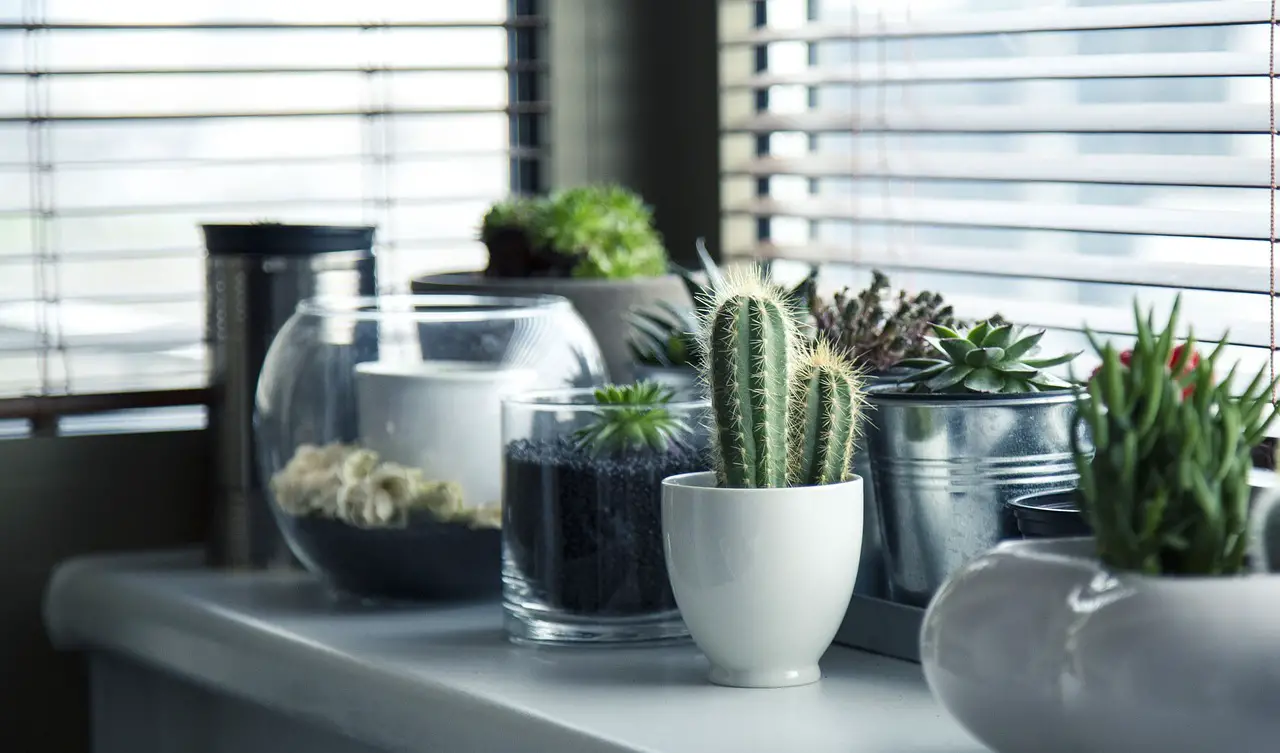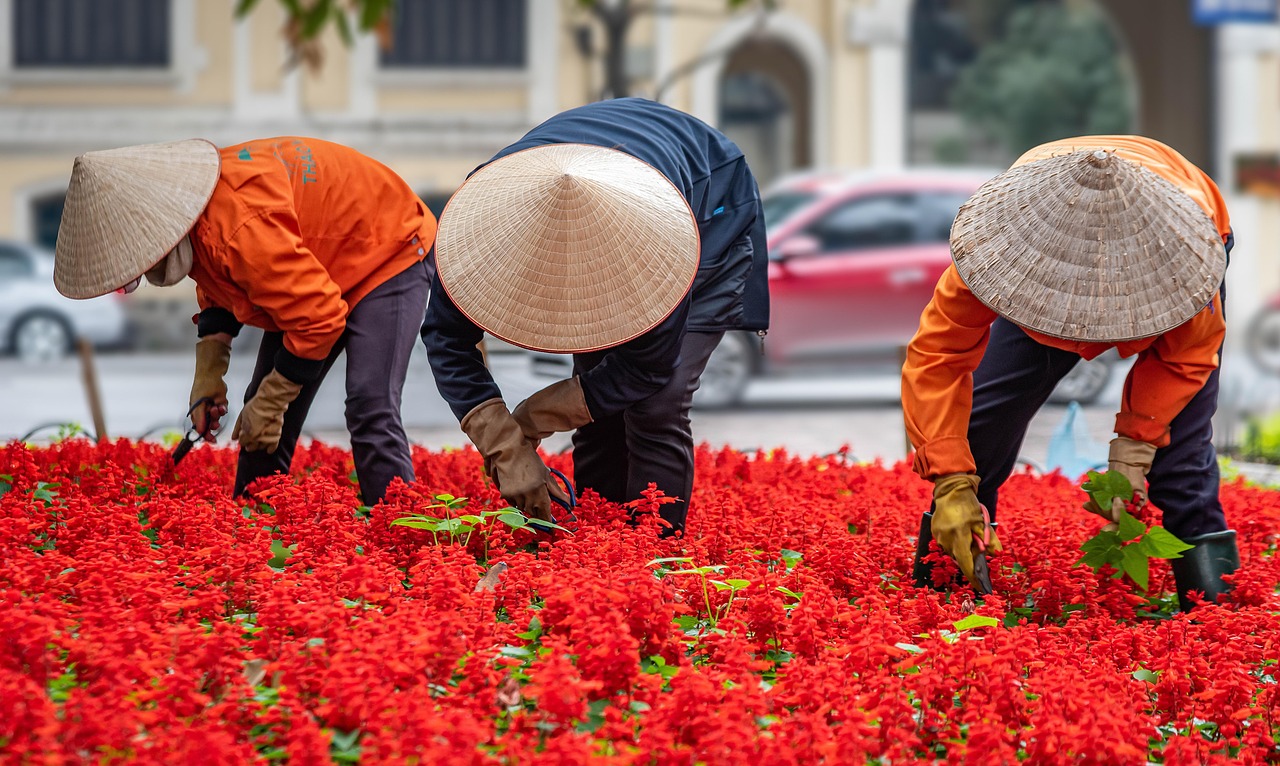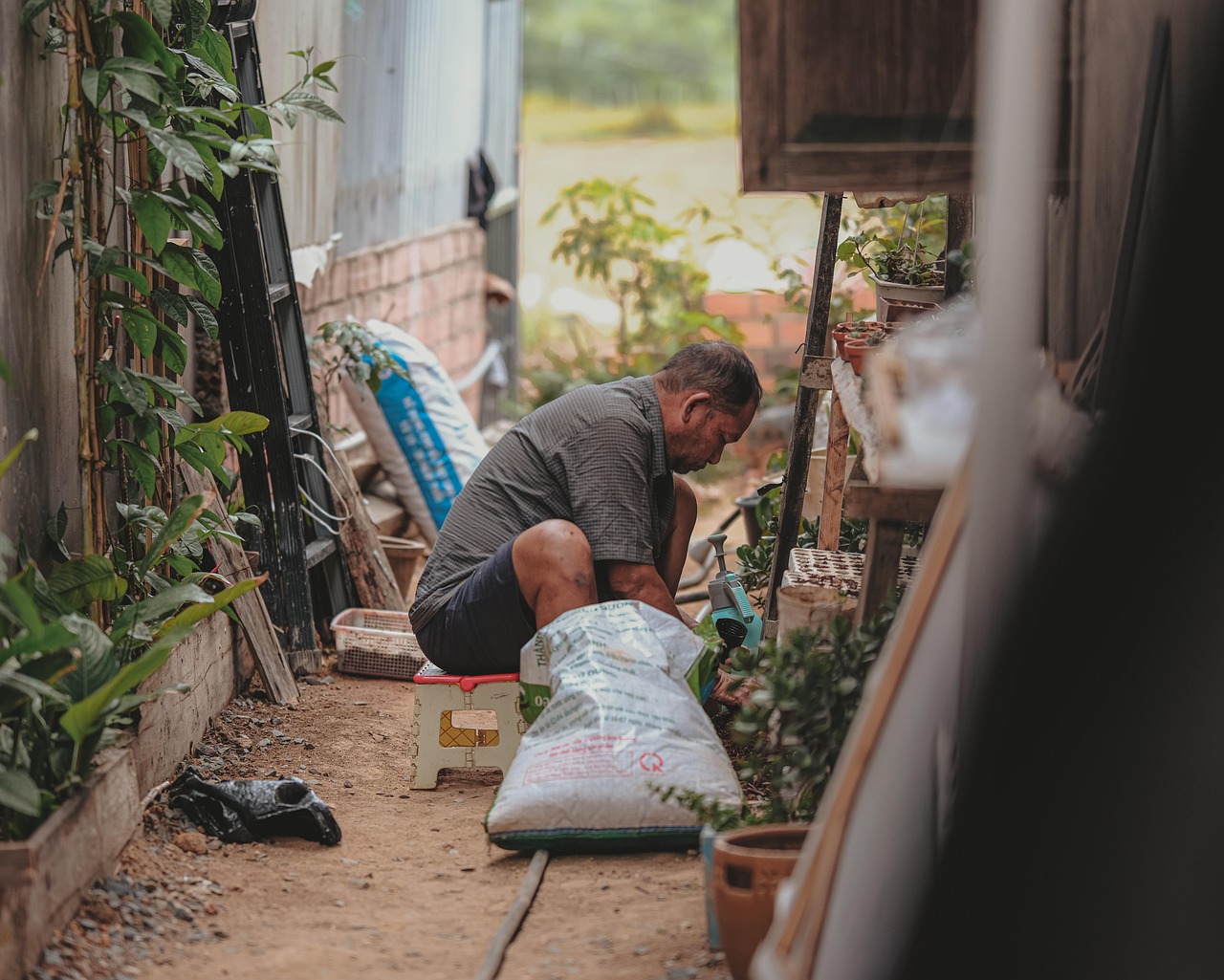Urban gardening is the practice of cultivating, processing, and distributing food in or around urban areas. It enables city dwellers to grow their own fresh produce, create green spaces, and contribute to environmental sustainability.
Understanding Urban Gardening
Urban gardening has become increasingly popular as more people move to cities. With limited space and resources, urban residents seek creative ways to grow their own food. This practice not only enhances food security but also promotes mental well-being and community engagement.

There are various forms of urban gardening, each catering to different needs and environments. Some of the most common methods include container gardening, vertical gardening, and rooftop gardens. Each method allows individuals to maximize their available space and grow plants effectively.
Benefits of Urban Gardening
Urban gardening offers numerous benefits that extend beyond the simple act of growing food. Here are some key advantages:
- Fresh Produce: Urban gardeners can enjoy fresh fruits and vegetables, which are often more nutritious than store-bought options.
- Environmental Impact: Gardening helps reduce carbon footprints by decreasing reliance on store-bought goods that require transportation.
- Community Building: Urban gardens can foster a sense of community as neighbors come together to cultivate their spaces.
- Mental Health: Engaging with nature has been shown to reduce stress and improve mental well-being.
- Education: Urban gardening provides opportunities for learning about sustainable practices, nutrition, and ecology.
Types of Urban Gardens
Understanding the various types of urban gardens can help you decide which method suits your lifestyle and available space best. Below are some popular types:

| Type of Garden | Description | Best For |
|---|---|---|
| Container Gardens | Gardening in pots or containers that can be placed on balconies or patios. | Small spaces with limited soil access. |
| Vertical Gardens | Growing plants on vertical surfaces using frames or trellises. | Urban areas with minimal ground space. |
| Rooftop Gardens | Utilizing rooftops for planting crops, flowers, or herbs. | Buildings with flat rooftops. |
| Community Gardens | A shared space where multiple individuals cultivate plots together. | Neighborhoods seeking to bond through gardening. |
| Hydroponic Gardens | A method of growing plants without soil by using nutrient-rich water. | Those interested in innovative gardening techniques. |
Selecting the right type of garden can enhance your urban gardening experience. Consider factors such as available space, sunlight, and your personal goals for gardening. Each type has its unique advantages and can lead to a rewarding hobby.
Getting Started with Urban Gardening
If you are new to urban gardening, it is essential to start with a plan. Here are some steps to help you begin your gardening journey:
- Assess Your Space: Evaluate your available area for gardening, considering sunlight and accessibility.
- Choose Your Plants: Select plants that thrive in your climate and suit your taste preferences.
- Gather Supplies: Obtain necessary supplies such as pots, soil, seeds, and tools.
- Create a Schedule: Plan a watering and maintenance schedule to keep your garden healthy.
- Start Small: Begin with a few plants to avoid feeling overwhelmed as you learn.
Starting small allows you to gain experience without becoming discouraged. As you become more comfortable with the process, you can expand your garden and try new techniques. Urban gardening is not just a trend; it is a sustainable practice that can transform city living into a greener experience.

Essential Tools for Urban Gardening
To successfully cultivate your urban garden, having the right tools is essential. These tools can help you manage your plants effectively, ensuring they grow healthy and strong. Below is a list of must-have gardening tools, along with their functions:
- Hand Trowel: A small shovel for digging and planting seeds or seedlings.
- Pruning Shears: Used for trimming and shaping plants to promote healthy growth.
- Watering Can: Ideal for providing gentle watering, especially for delicate plants.
- Gloves: Protects your hands from dirt, thorns, and blisters while gardening.
- Garden Fork: Useful for turning soil and mixing in compost.
- Soil Tester: Measures pH levels and soil nutrients to ensure optimal growing conditions.
Choosing the Right Soil
The foundation of any successful garden lies in the soil. Understanding the different types of soil and their properties will help you choose the best option for your plants. Here are some common types of soil used in urban gardening:
| Type of Soil | Description | Best For |
|---|---|---|
| Potting Soil | A lightweight mix designed for container gardening. | Indoor plants and container gardens. |
| Garden Soil | Rich in organic matter, suitable for outdoor planting. | Ground gardens and raised beds. |
| Compost | Decomposed organic material that enriches soil. | Addition to any planting mix to improve nutrients. |
| Sandy Soil | Drains quickly and warms up fast but lacks nutrients. | Crops that require good drainage, like carrots. |
| Clay Soil | Tightly packed and retains moisture but can become compacted. | Crops that require moisture retention, like rice. |
Selecting the right type of soil is crucial for the health of your plants. For urban gardening, a mixture of potting soil and compost is often ideal, as it provides both nutrients and proper drainage.

Watering Your Urban Garden
Watering is an integral part of gardening. It is essential to provide your plants with the right amount of water to thrive. Here are some tips on how to effectively water your urban garden:
- Water Early or Late: Watering during the early morning or late evening reduces evaporation losses.
- Deep Watering: Water deeply but infrequently. This encourages roots to grow deeper into the soil.
- Avoid Overwatering: Check the moisture level before watering. Overwatering can lead to root rot and other issues.
- Use Mulch: Applying mulch around plants helps retain moisture in the soil.
- Consider Drip Irrigation: A drip irrigation system can efficiently deliver water directly to the plant roots, saving time and resources.
By following these watering practices, you can ensure that your plants receive the hydration they need without wasting water. This is especially important in urban settings where water conservation is crucial.
Pest Management in Urban Gardens
Pests can pose a significant threat to urban gardens. However, effective pest management strategies can minimize damage while maintaining a healthy ecosystem. Here are some natural methods for managing pests:
- Companion Planting: Grow certain plants together that repel pests or attract beneficial insects. For example, marigolds can deter aphids.
- Neem Oil: A natural pesticide derived from the neem tree, effective against a variety of pests.
- Insecticidal Soap: A safe option for controlling soft-bodied insects like aphids and spider mites.
- Beneficial Insects: Introduce ladybugs or lacewings, which prey on common garden pests.
- Diatomaceous Earth: A natural powder that can be sprinkled on plants to deter crawling insects.
Employing these strategies will help keep your garden healthy and thriving without resorting to harmful chemicals. Remember that maintaining a balanced ecosystem is key to successful urban gardening.
Harvesting and Storing Your Urban Garden Produce
Once your plants begin to grow, the next step is harvesting. Knowing when and how to harvest your crops can make a significant difference in taste and quality. Additionally, proper storage techniques will help maintain freshness and prevent spoilage.
When to Harvest
The timing of your harvest can vary depending on the type of plant you are growing. Here are some general guidelines for common urban garden crops:
- Leafy Greens: Harvest when leaves are large enough to eat but before they flower.
- Tomatoes: Pick when they are fully colored and slightly soft to the touch.
- Peppers: Harvest when they reach their desired color and size.
- Root Vegetables: Check frequently; they are usually ready when they reach a good size.
- Herbs: Regularly pinch off leaves to encourage growth and prevent flowering.
How to Harvest
Using the right techniques when harvesting can prevent damage to both the plants and the produce. Here are some methods to consider:
- Use Clean Tools: Always use clean scissors or pruning shears to avoid spreading diseases.
- Handle Gently: Be careful not to bruise or damage fruits and vegetables.
- Harvest in the Morning: This is when plants have the highest moisture content, leading to better flavor.
- Leave Some Behind: Leave a few fruits or vegetables on the plant to encourage continuous growth.
Storing Your Harvest
Proper storage of your harvested produce is essential to extend shelf life and maintain quality. Here are some effective storage tips:
| Produce | Storage Method | Optimal Storage Conditions |
|---|---|---|
| Leafy Greens | Wrap in a damp paper towel and place in a plastic bag. | Refrigerate; use within a week for best quality. |
| Tomatoes | Store at room temperature, stem side up. | Avoid refrigeration; consume within a few days for best flavor. |
| Peppers | Place in a paper bag or breathable container. | Refrigerate; use within two weeks for best quality. |
| Root Vegetables | Bury in sand or store in a cool, dark place. | Avoid moisture; can last several months. |
| Herbs | Store in a glass of water or wrap in a damp cloth. | Refrigerate; use within a week for best flavor. |
By following these storage methods, you can enjoy the fruits of your labor long after harvest. Fresh produce from your garden not only tastes better but also offers numerous nutritional benefits.
Coping with Seasonal Changes
Your urban garden will face various seasonal changes throughout the year. Being prepared for these shifts is vital to maintaining a healthy garden. Here are some strategies for coping with seasonal variations:
Spring Preparation
Spring is an exciting time for planting. Ensure your soil is ready by testing its nutrient levels and incorporating compost. Some early crops to consider include:
- Lettuce: Quick-growing and can be harvested multiple times.
- Radishes: Fast-growing and ideal for cooler temperatures.
- Peas: Plant early as they thrive in cooler weather.
Summer Care
The summer months bring warmth, which can be beneficial but also requires careful attention to watering. Aim to:
- Water Deeply: Ensure roots are well-hydrated during hot days.
- Add Mulch: This helps retain moisture and regulate soil temperature.
- Monitor for Pests: Keep an eye out for pests that thrive in warm weather.
Fall Transition
As temperatures drop, it’s time to prepare your garden for winter. Consider these actions:
- Select Cold-Hardy Crops: Plant varieties like kale and Brussels sprouts that can withstand frost.
- Add Organic Matter: Amend soil with compost to improve its structure for the next growing season.
- Protect Plants: Use row covers or cloches to shield young plants from frost.
Winter Strategies
If you live in a region with cold winters, you may need to winterize your garden. Here are some methods:
- Create a Greenhouse Effect: Use cold frames or mini-greenhouses to protect plants from extreme cold.
- Plan for Spring: Use this downtime to plan your spring garden layout and select new seeds.
Coping with seasonal changes is essential for the success of your urban garden. By preparing adequately and adapting your practices, you can enjoy gardening year-round, regardless of the climate challenges you face.
Advanced Techniques for Urban Gardening
As you gain more experience with urban gardening, you may want to explore advanced techniques to optimize your gardening efforts. These methods can help maximize yield, improve plant health, and make the most of limited space.
Hydroponics
Hydroponics is a method of growing plants without soil, using a nutrient-rich water solution instead. This technique can be particularly advantageous in urban settings where soil quality may be poor or space is limited. Here are some key advantages of hydroponics:
- Space Efficiency: Hydroponic systems can be vertically stacked, allowing you to grow more plants in less space.
- Faster Growth: Plants grown hydroponically often grow faster than those in soil due to increased nutrient availability.
- Less Water Usage: Hydroponics uses significantly less water compared to traditional gardening methods.
Aeroponics
Aeroponics is similar to hydroponics but takes it a step further. In this method, plant roots are suspended in air and misted with nutrient solutions. This technique can lead to even faster growth and is often used in commercial farming. Key benefits include:
- Maximized Oxygen Exposure: Roots receive ample oxygen, promoting healthier growth.
- Reduced Risk of Disease: Soil-borne diseases are eliminated, leading to healthier plants.
Composting
Starting a compost pile or bin is an excellent way to recycle kitchen scraps and yard waste while providing nutrient-rich material for your garden. Here’s how to effectively compost:
- Choose a Bin: Select a compost bin that fits your space; options range from simple piles to enclosed bins.
- Add Materials: Combine brown materials (dry leaves, cardboard) with green materials (fruit scraps, grass clippings).
- Turn Your Pile: Regularly aerate the pile by turning it to speed up decomposition.
- Monitor Moisture: Keep the compost moist but not soggy; it should feel like a damp sponge.
Using compost not only enriches your soil but also reduces waste sent to landfills, making it a sustainable choice for urban gardeners.
Community Involvement and Resources
Engaging with your local gardening community can provide valuable support and resources. Here are some ways to get involved:
- Join a Community Garden: Participating in a community garden allows you to share resources and knowledge with fellow gardeners.
- Attend Workshops: Many local gardening centers or extension services offer workshops on various gardening topics.
- Connect Online: Join social media groups or forums dedicated to urban gardening where you can ask questions and share experiences.
By getting involved with others who share your passion, you can learn new techniques and gain inspiration for your urban gardening projects.
Final Thoughts
Urban gardening is a rewarding practice that offers numerous benefits, from fresh produce to mental well-being. By understanding the various aspects of urban gardening—from choosing the right tools and plants to effective harvesting and pest management—you can create a thriving garden in even the smallest spaces.
The journey of urban gardening is not just about growing food; it is also about building community, promoting sustainability, and enhancing your quality of life. Whether you are just starting or looking to implement advanced techniques, there is always something new to learn and explore in the world of urban gardening.
Embrace the challenges and joys of urban gardening. With dedication and creativity, you can transform your urban environment into a vibrant green space that brings beauty and nourishment into your life.
